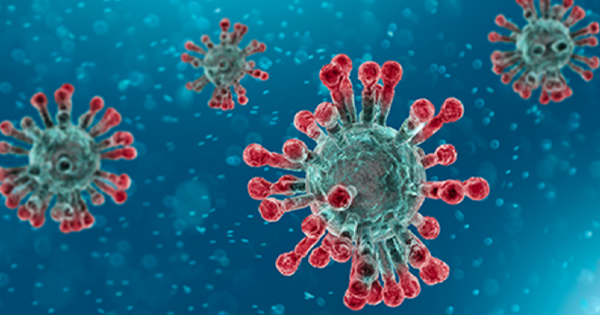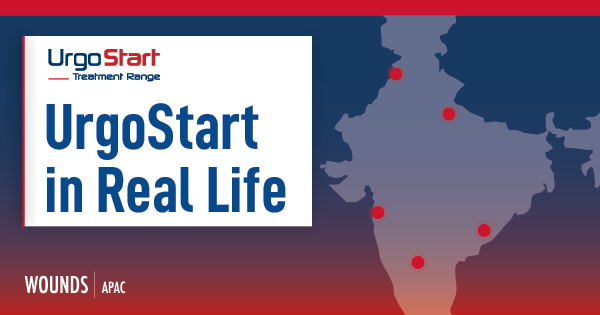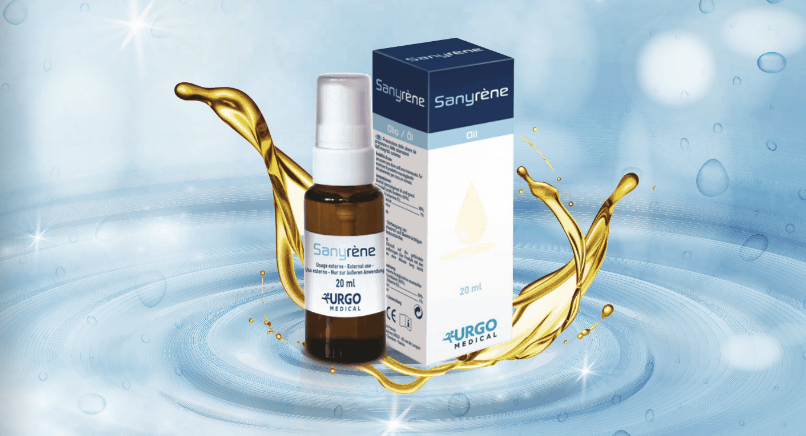The first case of COVID-19 infection in the Philippines was documented in late January 2020. The pandemic brought an unprecedented challenge to healthcare service delivery and mostly affected the vulnerable, older and immunocompromised population. During this time, there was rapid implementation of social restrictions and older people who were not fully vaccinated against COVID-19 were restricted from leaving the safety of their homes. Family members and caregivers of older individuals deferred seeking medical attention due to fear of contracting COVID-19 in the hospital. In addition, outpatient clinic follow-ups and nursing home visits were limited during the pandemic.
It is important to note that older people are at risk of developing pressure injuries (or pressure ulcers; for the purposes of this study we refer to them as pressure injuries or hospital-acquired pressure injuries; HAPI) during hospitalisation, especially those who have coexisting comorbidities, malnutrition, frailty and limited social support (Ciyiltepe et al, 2022). A pressure injury is defined as any localised damage to the skin and underlying soft tissue caused by intense and/or persistent pressure, pressure combined with shear, pressure over a bony prominence, or associated with medical or other equipment (European Pressure Ulcer Advisory Panel, National Pressure Injury Advisory Panel and Pan Pacific Pressure Injury Alliance 2019).
The overwhelmed healthcare system during the pandemic should be considered as an added risk factor for pressure injuries: there was a shift of workforce and the deployment of healthcare workers was primarily focused on the COVID-19 wards. Burnout and compassion fatigue increased among healthcare staff due to lack of manpower and insufficient appropriate equipment (mattresses, support surfaces). However, pressure injuries were also noted to increase among non-COVID-19 cases in the intensive care unit (ICU) during the pandemic and existing pressure injuries in older patients were aggravated (Ahmad, 2021; Ciyiltepe, 2022).
There is no available published literature in the Philippines regarding pressure injuries among older patients admitted during the pandemic. Data is important to help effectively prevent the occurrence of pressure injuries and, when they do occur, manage them using an evidence-based approach to facilitate faster healing. This can decrease morbidity and mortality and provide a good indicator of the hospital’s quality of care (Martel, 2020; Nieto-García, 2022). Hospitalisation costs can rise due to prolonged stays because of pressure injuries; prolonged stays are also associated with an increased risk of associated infections. During the pandemic, there was a noted increase in incidences of medical device-related pressure injuries secondary to proning and prolonged intubation (Amini, 2022).
This research is a baseline study. The study aims to determine the incidence of HAPI among older patients admitted during the pandemic to Quirino Memorial Medical Center (Quezon City, Philippes). Currently, there is no recognised hospital policy regarding pressure injury prevention for older patients and there is no standardisation in the reporting and grading of pressure injuries. The study’s secondary aim is to determine the predictors and outcomes for the older patients with pressure injuries. The data can be used to formulate pressure injury risk assessment and for tagging of patients who are at risk of developing HAPI.
Objective
To determine the incidence, predictors and outcomes of HAPI among older inpatients admitted to Quirino Memorial Medical Center from 1 January 2020 to 31 December 2021.
To determine the characteristics of older patients diagnosed with HAPI:
- Demographic characteristics — age, gender, BMI, comorbidities such as hypertensive cardiovascular disease, diabetes, neurologic diseases (cerebrovascular disease, dementia, spinal cord compressions), chronic renal disease, malignancy
- Clinical characteristics — length of hospitalisation stay, appearance time of pressure injury or day of its recognition during hospitalisation
- Principal diagnosis upon admission — COVID-19 case and non-COVID-19 case.
To determine the HAPI characteristics such as:
- Pressure injury anatomical location
- Pressure injury stage using the National Pressure Injury Advisory Panel (NPIAP) staging, upon initial wound recognition
- Number of pressure injuries developed during hospitalisation per patient, progression and regression of pressure injuries
- Presence or absence of pain
- Microbiologic profile as evidenced by tissue/wound culture.
Methodology
This is a retrospective cohort study using convenient sampling, including all older patients (from age 60 upwards) admitted from 1 January 2020 to 31 December 2021. From this population, the study included older patient cases with HAPI that satisfied the inclusion and exclusion criteria. Ideal sample size computed using the Cochran’s sample size formula: n=385[Figure 1].
Upon checking medical records, only 54 charts with records of HAPI among the older were available for the time period. Many were excluded on the basis that they did not satisfy the inclusion criteria, hence only 34 patients were included in the study. Inclusion criteria:
- Age >60 years old
- Developed HAPI in their hospital record from 1 January 2020 to 31 December 2021.
Exclusion criteria
- Those admitted with pre-existing pressure injuries.
Based on the ICD10-based disease index filing of the hospital, a total of 54 charts were filed under the diagnosis of L89 – Pressure Ulcer from 1 January 2020 to 31 December 2021 and four inpatient charts were unavailable. A total of 34 charts were available for retrieval and subsequently reviewed[Figure 2]. The demographic data and clinical information, microbiologic profile, comorbidities and pressure injury characteristics were collected through chart review. Patients’ personal information was not disclosed. The primary researcher collected all data. The co-author had access to the data and was involved in data analysis. Both hard and soft copies of data will be stored for 5 years in a secured storage and password encrypted folder, respectively.
Descriptive statistics were used to summarise the demographic and clinical characteristics of the patients. Frequency and proportion were used for categorical variables; median and interquartile range for non-normally distributed continuous variables; and mean and standard deviation for normally distributed continuous variables. Independent sample t test, Mann-Whitney U test and Fisher’s exact/chi-squared test were used to determine the difference of mean, rank and frequency, respectively, between alive and expired. Odds ratio and corresponding 95% confidence intervals from binary logistic regression were computed to determine significant predictors for mortality. All statistical tests were two-tailed tests. Shapiro-Wilk test was used to test the normality of the continuous variables. Missing values were neither replaced nor estimated. Null hypotheses were rejected at 0.05 α-level of significance. Stata 13.1 was used for data analysis.
In accordance with the Republic Act 10173, also known as the Data Privacy Act of 2012, all information gathered was for the sole purpose of this research only and names of the patients were not disclosed. This research was approved by the Quirino Memorial Medical Center’s Research Ethics Board.
Results: patient characteristics
Thirty-four older patients who had developed HAPI were included in the study. The incidence rate was 1.4% (n = 54/3848), 14 new cases per 1,000 population.
Patients were categorised into four age groups: 20.59% (n=7) of patients aged 60–64 years, 50% (n=17) aged 65–74 years, which represents the majority of our patients. Followed by 23.53% (n=8) patients aged 75–84 years and the least 5.88% (n=2) patients aged ≥85 years. The age range was 60–85 years, the average age was 71.97 years and the median age was 70 years. The demographic and clinical profile of study patients irrespective of their outcome are shown in Table 1. There was a higher percentage of male patients at 58.82% (n=20) and 41.18% (n=14) were female. No significant difference in gender was noted. This distribution showed that the largest percentage of patients were overweight 29.17% (BMI 23–24.9, n=7; using Asian criteria cut-off) followed by 25% normal (BMI 18.5–22.9, n=6). There were 10 participants with no data on BMI.
Among co-morbidities, both hypertension 64.71% (n=22) and neurologic disease 64.71% (n=22) were frequently noted among older patients, followed by diabetes 55.88% (n=19), malignancy 8.82 % (n=3) and chronic renal disease 2.94% (n=1). The majority of patients had two or more comorbidities upon admission (n=14).
On admission, all patients were initially tagged as suspected COVID-19 cases, but were discharged 93.33% (n=14) or expired 84.21% (n=16) as non-COVID-19 cases after a negative RT PCR. Confirmed Covid cases were 11.46% (n = 4) with a positive real time reverse transcription–polymerase chain reaction test (RT PCR test). The range of hospitalisation was seven to 87 days, with an average of 31 days. The range of appearance of pressure injury during hospitalisation was from four to 51 days, with an average of 15 days.
The majority of pressure injuries developed were in stage 1, 50% (n=17) followed by stage 2, 38.24% (n=13) and the majority had no change in ulcer status 55.88% (n=19). Only three patients had recorded pain assessment associated with the pressure injury. The most common location of pressure injury developed was in the sacral, coccyx and buttocks area 97.06% (n=33). Among patients with Stage 3 pressure injuries 11.46% (n=4), wound debridement was done to only three patients because of the demise of one patient prior to procedure. There were only two wound or tissue cultures taken, one of which had a Proteus specie growth.
In terms of demographic and clinical profile of the patients, there were no associated statistical significance among these factors in relation to their outcome.
Results: risk factors and clinical outcome
Among the 34 patients included in the study, the outcome was 56% (n=19) for patients who died while 44% (n=15) were discharged. The mortality rate is 56% (n=19/34). The more advanced the age of the patient (75–84 years: crude odds ratio [cOR] 7.4998; 95% CI 0.7585 to 74.157), the more at risk of developing HAPI, which can lead to mortality. The same is seen with pressure injury staging (stage 3: cOR 3.3750; 95% CI 0.2897 to 39.322): the more severe stage the injury is when initially observed, the more likely that it will lead to complications.
In terms of mortality outcome, all demographic and clinical profile were not significant, with p-value above 0.05 as shown in Table 2. Missing data were not included in the table.
In our study, the incidence of HAPI is 1.4%. The incidence of pressure injuries abroad during the COVID-19 pandemic ranges from 2.9–46.7% (Amini, 2022; Nieto-García, 2022). The incidence rate varies among local and international studies. Locally, a seven-year retrospective study by Barit et al (2021) revealed that most patients who developed pressure injuries were over 50 years old, though this study did not compute for the incidence but determined wound dressing practices in a tertiary hospital in the Philippines. The incidence of pressure injuries among orthopedic Filipino patients aged 19 years and over was 20% (Molon, 2011); the majority of participants in this study who developed pressure injuries were 24–33 years old.
Among these local studies, there is insufficient data regarding pressure injuries specific to an older population. The majority of studies with older participants were done abroad. In an observational study by Morri et al (2021), incidences of pressure injuries were higher during the COVID-19 pandemic (21%) as opposed to the pre-pandemic era (10%) among orthopedic patients aged 65 years old and above. Latimer et al (2019) have shown that the incidence of HAPI was 10.8% in the first 36 hours of hospitalisation, noting that advancing age and an increase in number of comorbidities is associated with increased likelihood of developing pressure injuries. In our study, the incidence is lower (1.4%) and the number of COVID-19 cases (n=4) were fewer than non-COVID-19 cases (n=30).
Findings by Labeau et al (2021) show that low- or lower middle-income countries have the highest incidences of HAPI, because of increased length of ICU stays , limited resources and low spending on healthcare in comparison to other countries. Serpa et al (2021) compared pressure injuries in public and private hospitals in Brazil, finding that public hospitals had a higher incidence rate compared to private hospitals (9.9% vs. 4.1%). The same was observed in a study done in South Korea, owing to economic barriers in employing caregivers to prevent pressure injuries (Moon, 2021). In the study of Pittman et al (2019), it is shown that for each one-day stay in hospital, there is 4% increase of developing an unavoidable pressure injury. The mean length of hospital stay before development of HAPI differs in different studies ranging from 8–43 days (Aloweni et al, 2019; Pittman et al, 2019; Ahmad, 2021; Kendall et al, 2021; Amni, 2022; Montgomery et al, 2022).
Among the older population, multiple chronic comorbidities in one patient is common and an increase in number of comorbidities is associated with increased likelihood of developing a pressure injury. There are eight significant risk factors used as a prediction tool among HAPI in surgical patients (Aloweni, 2019):
- age ≥75 years
- female
- American Society of Anesthesiologists score ≥3
- BMI <23
- preoperative Braden score ≤14
- anaemia
- respiratory disease
- hypertension.
I
n Jaul et al (2018), malnutrition is a complicating factor that can increase vulnerability to pressure injury development, while Han (2018) has shown that level of consciousness is the most important variable in development of pressure injuries. In our study, the most commonly associated comorbidities were hypertension, neurologic disease and diabetes mellitus. Most neurologic diseases in our study were due to a cerebrovascular accident, hence patients were prone to injury development due to immobilisation, and more prone to falls and other injuries that would lead to prolonged hospitalisation. Though the majority of our participants had an overweight BMI, it is important to consider that older patients can have sarcopenia, affecting BMI’s use as an assessment tool for nutrition status among this population.
The sacral region was the most commonly affected anatomical site as shown in numerous studies due to the great pressure from body weight when in a prolonged supine position. The most common stages that HAPI had reached upon discovery were stage I and II (Barit J et al, 2021; Kendall et al, 2021; Labeau et al, 2021; Morri et al, 2021; Serpa et al, 2021; Amini et al, 2022). Many factors can contribute to the progression of pressure injuries despite adequate management, such as problems in blood circulation and oxygenation, comorbidities, severity of illness and ageing itself. The demographic and clinical profile of our patients was not statistically significant. The development of pressure injuries and mortality may be due to small sample size and poor documentation by health care professionals.
Conclusion and recommendations
Despite no association of factors in terms of mortality were concluded in the study, the data gathered revealed that it is prudent to strengthen the surveillance, documentation and reporting of pressure injuries among older patients because of their multifactorial risks in developing pressure ulcers during hospitalisation. Regardless of the patient’s COVID-19 status, a comprehensive and multidisciplinary approach should be taken to reduce incidence of pressure injuries among the older. This is important to lessen the burden to the patient and improve their quality of life. It is also essential to integrate pressure injury prevention, from hospital to community level, to provide continuity of care and empower caregivers in the prevention of pressure injuries progression once patients are discharged.
As this is a pilot study, more areas need to be tackled to determine the magnitude of the effect of pressure injuries on older patients. One can evaluate the current intervention of hospital admittance if it is optimal in prevention of HAPI and to evaluate knowledge of healthcare professionals in dealing with pressure ulcer injuries to special populations like older people. We recommend a prospective study among patients discharged with pressure injuries to determine the level of care in the community and if policies are provided to support and strengthen relatives and caregivers in the prevention of pressure injuries. In addition to this, more research is required to establish risk factors associated with mortality among older patients with pressure injuries.
It is important to gather more data by increasing the number of participants to yield a precise result and to have an adequate power in the study.
Limitations
The study is significantly limited by the number of records reviewed because of insufficient objective reporting. The actual incidence of pressure injuries might be higher than the rates identified. The retrospective cohort design might have resulted in selection bias of patients. The study did not include repeated admissions of older patients with pressure injuries, which has a significant impact in terms of pressure wound care and prevention. The study did not discuss the hospital’s current management and referral system for pressure injuries. It did not specify the wards or areas in the hospital where HAPI were seen.
This is valuable data to improve hospital delivery service in terms of pressure injury prevention and to focus in which area should be prioritised due to limited resources. It is challenging to double-check the reporting of the assessment of pressure injury staging because of interobserver variability among healthcare professionals. No laboratory parameters were included in the study, which can add valuable insight in terms of pressure injury development and mortality risk.
The strength of the study is that it is the first in a local setting to determine baseline data among older patients who developed pressure injuries during hospitalisation. It provides data for a quality improvement programme.




